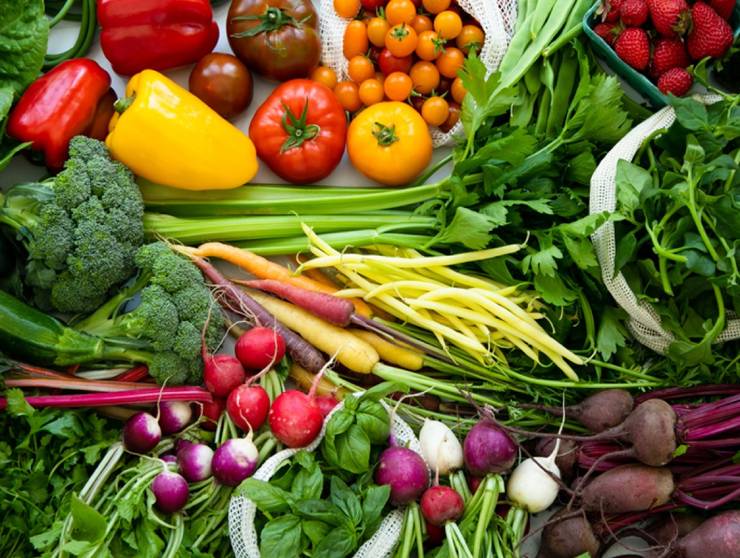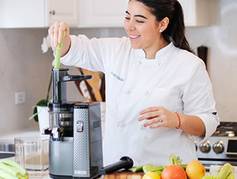Articles
Picking Fresh Produce for Juice
Ever wonder how to choose the best greens or fruit for your juice? Here are 7 great tips to consider for finding fresh, colorful produce to make your juice taste even better.
Tip 1: Bright is Best
Always select the fruits and vegetables that are brightest in color. Remember, the colors are natural pigments signifying the valuable micronutrients in the produce including carotenoids (orange), chlorophylls (green), anthocyanins (purple) and more. If something is browning or discolored, it indicates it may be spoiling.
Tip 2: Look For What’s In Season
Farm-fresh produce (found at your local farmers’ market or through a CSA) is grown at the peak of the season and is more likely to have been picked recently. That means that you’ll be giving your body more nutrition. Most conventionally-grown produce gets picked and then sits on a truck or at a warehouse for weeks at a time before it gets to your local grocery store shelf. Seasonal produce that’s fresh from the farm or garden will last longer in your refrigerator or on your counter.
Tip 3: Use Your Senses
It’s only natural to want to pick up your produce. Start by inspecting the surface—it should be mostly smooth and even with a firm feel. If it’s rock hard, it’s not ready yet. Don’t be afraid to give your produce a whiff. You’ll be surprised at how incredible the nose is at sensing freshness. Your sense of smell can be a great indicator of freshness. If it smells bad, put it down.
Tip 4: Avoid Plastic Bags
Produce that remains in extended contact with plastic bags may absorb some of the chemicals from the plastic itself. Plastic tends to traps air inside and not allow fresh air to get in, so fresh food stored in plastic bags for too long will rot instead of ripen. Also, buying produce in plastic bags promotes the production and sales of more plastic.
Tip 5: Size Matters
You don’t always need to buy the whole bunch of grapes or bananas. Buy just what you need to avoid waste. Or if you know you’re making juice for a crowd, many times you can get a better deal when you buy a larger piece of fruit or buy in bulk.
Tip 6: Dirt is Your Friend
When produce is fresh from the farm, it may not look perfect or be perfectly shaped. In fact, it may have a little dirt on it. But you will know it is fresh and nutrient-rich. Plus, dirt is usually packed with different minerals and microorganisms. Research shows that exposure to a variety of microbes can help boost immunity. You can certainly wash your fruits and veggies before juicing them, just know that a little dirt on them means they are fresh.
Tip 7: Visit the Frozen Section
Since frozen fruits and veggies are frozen within hours after harvest, the freezing process actually locks in the precious nutrients. Also, frozen fruits and veggies may be cheaper than fresh, and they are perfect for your frozen desserts. For those looking to buy more organics, oftentimes frozen berries and veggies can be a better deal than the non-organic fresh ones, depending on the season.
P.S. Please be kind to our Earth and upcycle your pulp and spoiled fruits and vegetables by composting. Also note that pulp can be added to stocks and sauces or dehydrated and used to make granola, crackers and more.
sources:
1 https://www.health.harvard.edu/staying-healthy/add-color-to-your-diet-for-good-nutrition
2 http://www.fruitandvegetable.ucdavis.edu/files/197179.pdf
3 https://food.ndtv.com/facts/storing-your-vegetables-in-plastic-bags-heres-why-you-need-to-stop-1729511
4 https://swagoz.com/blogs/blog/the-dangers-of-storing-food-in-plastic-bags
5 https://www.ncbi.nlm.nih.gov/pmc/articles/PMC6780873
- Choosing a selection results in a full page refresh.
- Press the space key then arrow keys to make a selection.


.jpg%3Fv%3D0&c_options=w_237,h_179)
